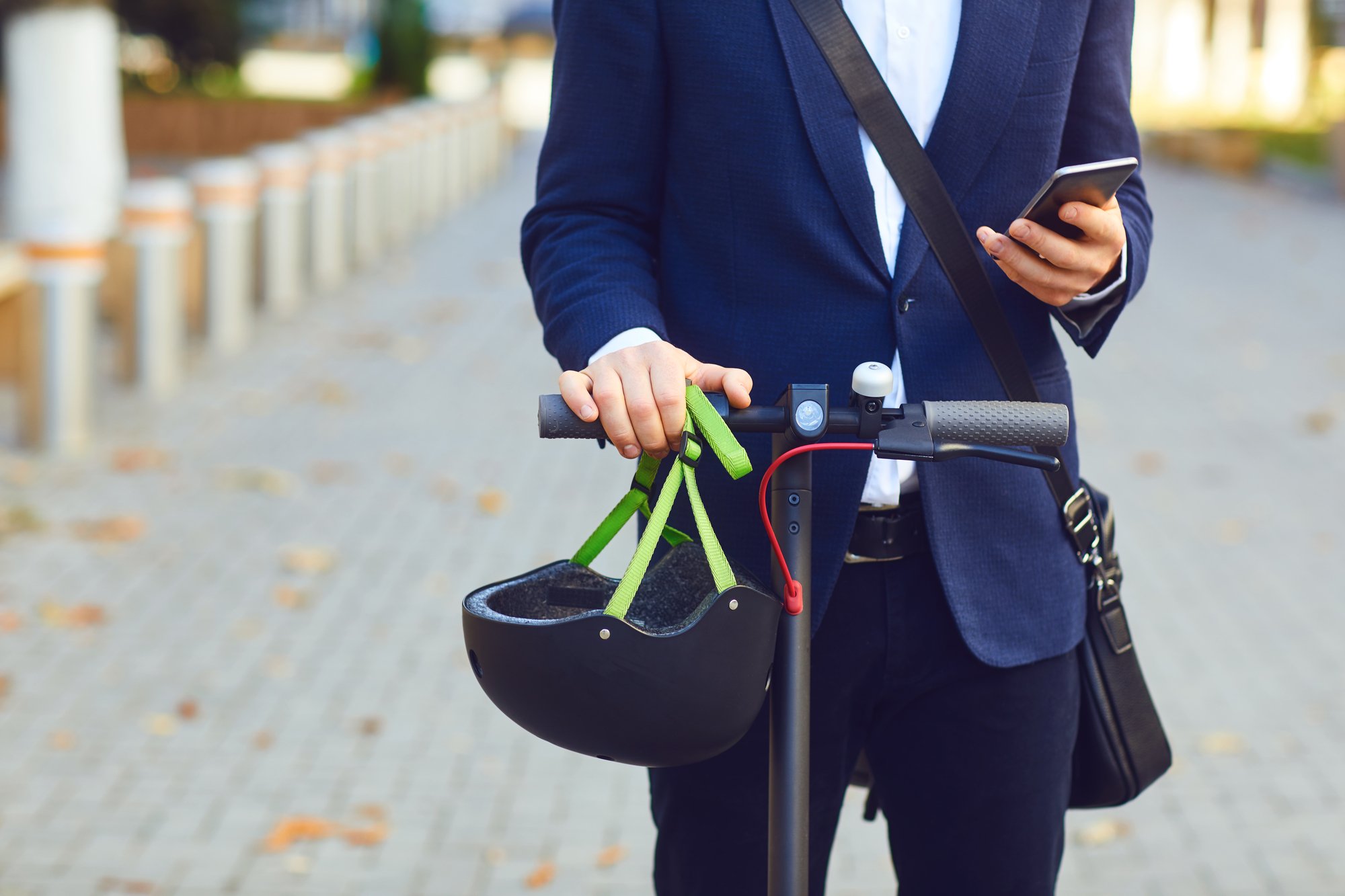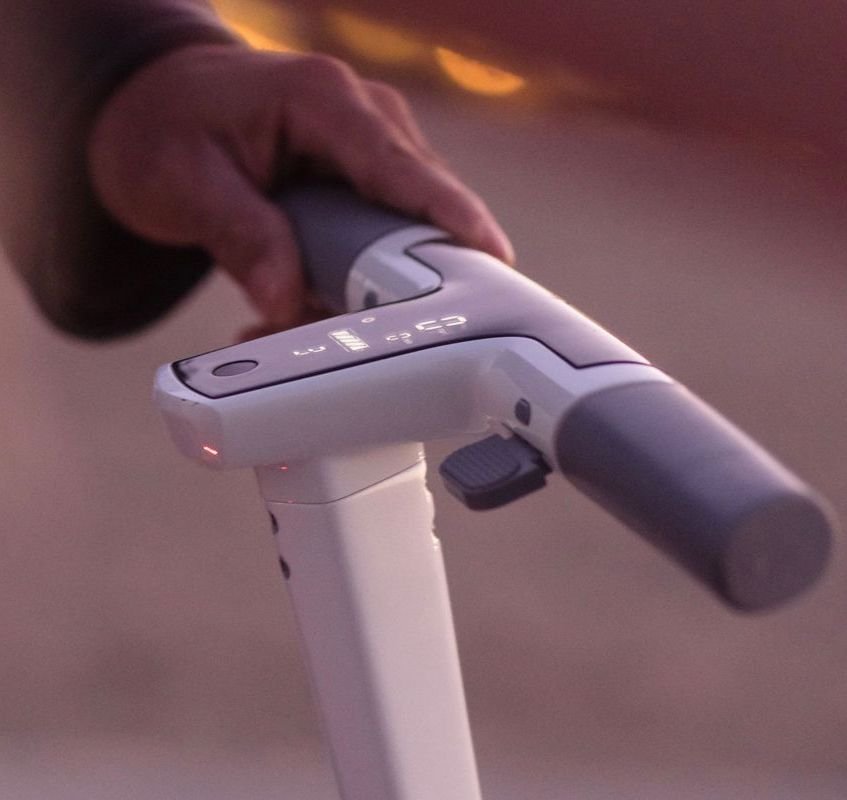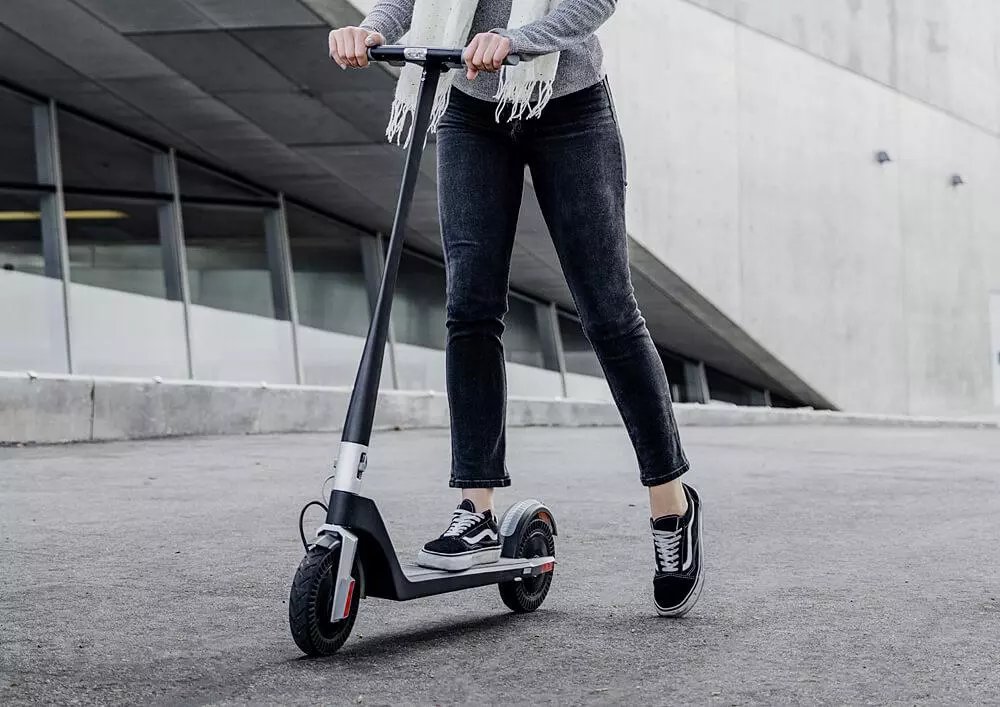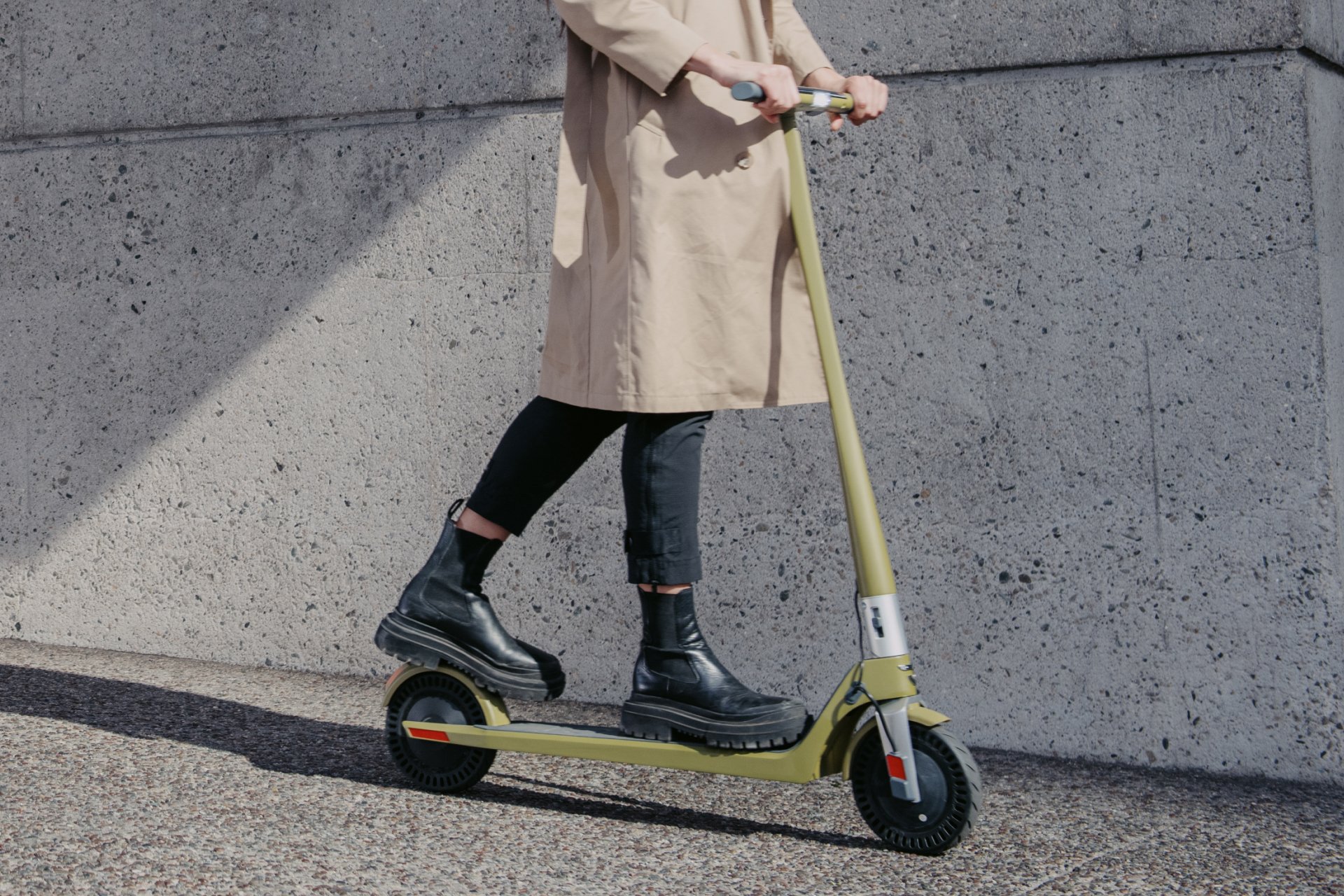Micromobility is here to stay, and it’s changing how we experience urban life for the better. With Unagi’s membership program, you can enjoy all the benefits of a top-tier electric scooter without the sky-high price of ownership or the inconvenience of ride-sharing.
If you’ve decided that a fast, lightweight, folding electric scooter meets your transportation needs, and you’ve already started looking for the perfect electric scooter, you're almost there...
However, if you’ve never ridden an electric scooter before and you have a little trepidation about stepping on one for the first time, don't worry, we've got you covered.
Lightest electric scooters are fun, fast, and convenient ways to get around town, so don’t let a little inexperience stop you from trying and buying one.
Like riding a bike for the first time, it may take some getting used to and there are a few basics to master. However, once you’ve got it, you’ve got it, and you're in for the ride of your life.
Check out some of Unagi’s tips below for riding an electric scooter.
Safety First:
No matter how slow you are riding, wearing high quality electric scooter safety gear to protect you is important. Your protective gear will be your first line of defense should an accident happen:
A helmet
This goes without saying-you should always wear a helmet when riding an e-scooter. While the CPSC standard helmet can protect against most head injuries, if you like riding fast, you might want something that offers more protection at higher speeds.
When choosing a helmet, make sure it fits properly—you don't want something too tight or too loose, and you definitely don't want something heavy. Ideally you're looking for a helmet that is lightweight but still strong.

Protective clothing
When riding your scooter, try to wear protective clothing such as long-sleeved shirts, long-leg pants, and closed-toe shoes that can protect your skin from cuts and scrapes in the event of a fall.
Top tip - when you're riding an electric scooter for the first time, avoid carrying purses or backpacks as these items can put you off balance and cause a fall.
Knee and elbow pads
Wearing knee and elbow pads is especially important for children learning to ride a scooter. These vital pieces of safety equipment will often take the brunt of a fall, absorbing the shock to prevent serious injuries like bone fractures.
When you're wearing your elbow and knee pads, you want them to be comfortably tight, but not too restrictive. Elasticated pads with adjustable straps are highly recommended.
Getting Started:
Try not to go on heavily-trafficked roads until you get used to riding an electric scooter. For your first ride, avoid bike lanes or paths with any uneven surfaces that could trip you up until you get the hang of riding an e-scooter.
Similarly, avoid riding an electric scooter in the rain, snow, or on slippery grounds. You can easily lose control and fall while riding.
A perfect spot for learning how to ride an electric scooter is an open area with lots of space, like a parking lot or cul-de-sac. If you can find a road that is paved and has no obstacles, that would be great too.
There should be little traffic, so choose a time of day when there are fewer cyclists, cars, pedestrians, etc. around. This way you can focus on learning how to ride an electric scooter safely without worrying you might hurt someone else or their property.
Familiarize Yourself with Your Electric Scooter Controls
Before you power up your electric scooter for the first time, take a moment to familiarize yourself with how the e-scooter works. You need to know where all the controls are and how to operate them.

Here are some of the most important electric scooter controls to learn:
Brakes
You’ll especially want to familiarize yourself with how the brakes work. Electric scooter brakes vary and some have brake levers that need to be adjusted before riding.
Some scooters have a handbrake system while others come with a foot brake on the rear fender as an additional brake. If your e-scooter has a rear fender step-on brake, you may need to practice a couple of times before riding at full tilt. Make sure to go easy at first until you know how to operate them safely.
For an Unagi Model One, for example, there are dual electronic brakes in addition to a rear fender brake. The rear fender brake seems redundant, but Unagi added it just in case the electronic option malfunctions.
Both brakes are very sensitive and bring the Unagi to a complete halt in just 17 feet (5.18 meters), which is on par with the mechanic disc brakes on the M365 (5.0 meters).
Accelerator
The next thing you want to know about is the scooter accelerator. E-scooters may come with a handlebar twist throttle, thumb throttle, and index finger (trigger) style throttle.
Like the brakes, throttle sensitivity varies. You’ll need to get used to your scooter’s throttle version in a controlled environment.
You’ll want to know whether your scooter’s acceleration is smooth or more of a kick, because some e-scooters almost yank forward, and you'll want to know if yours is one of them.
The E500 Unagi Model One, for example, comes with a thumb throttle with spot-on acceleration, making it feel pretty zippy for an e-scooter in its price range.
Unagi can reach 15mph (24 kph) top speed in just under 4.4 seconds, making it the fastest of any 26-lb scooter on the market. Not that we recommend riding the scooter at such top speeds for safety purposes.
Display
Getting acquainted with the display is also really important before riding the scooter for the first time. Electric scooter displays communicate vital riding information like speed, battery life, and distance covered.
Take the Unagi Model Eleven’s game-changing dual-motor, full-suspension electric scooter, for example.
The Model Eleven features a round touchscreen display with an integrated LCD ring that animates in various colors to alert the rider on battery life, current speed, riding mode, mileage, error messages, and several other functions.
Even better, it is the first electric scooter to include an Advanced Driver Assistance System (ADA). Using optical sensors, the scooter can detect objects in the scooter’s path and issue warnings through audio and visual feedback.
Not only does it provide turn-by-turn navigation, but it issues alerts regarding collision detection, lane departure, signaling, etc.
Test the electric scooter
Before you take your wheels out for a spin, double-check the scooter for safety before each ride. What are you looking for?
- The folding mechanism is locked in place.
- The battery has enough juice for your trip.
- Tires are in good condition, and if air-filled, have sufficient pressure.
- Brakes are in good condition and properly adjusted.
- Scooter looks good and there are no weird noises suggesting obvious damage.
How to Ride an Electric Scooter: Step-By-Step
Riding an electric scooter is not as hard as you might think. However, getting the first steps right are crucial for your (and the other road user's) safety.
Follow the steps below and you will be riding in no time.
Choose a Flat Surface to Practice
To get your e-scooter journey off to a flying start, choose a relatively large area that gives you free rein in your riding trials. For example, practice riding your wheels in an empty parking lot, a flat paved road, or a sidewalk.
All of these spaces will help you learn the steps and get a feel for riding without worrying about obstacles, such as hills.
Mind Your Riding Conditions
We can’t stress this enough. You should avoid unfavorable conditions when riding e-scooters. And you should never ride an electric scooter in the rain.
If it begins to rain while you are riding, you should power down your electric scooter immediately.
While many electric scooters like Unagi have LED head-and tail-lighting to help you see in low light, and to help others see you, you should also avoid riding at night as much as possible.
It can be hard to see in front of you in low-light conditions, especially at higher speeds. Even when the road ahead seems clear, you won’t be able to see obstacles and approaching vehicles from the sides.
You should also try to avoid riding an electric scooter on rough terrain. E-scooters are designed to work best on flat, level pavement, so steer clear of bumpy bike paths, pavement with potholes, roads under construction or repair, and sharp inclines.
If you do find yourself in such conditions, it may be best to dismount your scooter and walk until you get to more even ground.
Place Yourself and Go Slow at First
OK, it's time for your inaugural ride. Put your weaker foot on the deck and kick off from the ground using your stronger foot.
By kicking off from the ground and twisting the accelerator, the scooter will start moving. Hold on to the handlebars and start moving at a slow speed.
As mentioned earlier, well-designed electric scooters like Unagi can reach speeds of up to 17 miles per hour, which will feel plenty fast enough on the road. You will find that it’s easy to maintain your balance at lower speeds, but it can be a little more challenging at higher speeds.
While it can be tempting to hit the throttle and take off, you’ll want to take it easy and pace yourself to make sure you are maintaining a safe speed and have control of the vehicle at all times. Therefore, you’ll want to find a speed that feels safe and comfortable for you and try not to exceed it.

Rotate the Handlebars in the Direction You Want to Go
Electric scooter handlebars are like the steering wheel in a car. Rotating the handlebars directs the scooter in the direction you want to go.
Like the throttle, don’t push or pull the electric scooter handlebars really hard. The movement should be slow and steady to keep the ride nice and smooth.
While the handlebars help you balance the scooter when riding, your core and weight should be the ones doing the most balancing and maneuvering. You can easily maintain balance by engaging your core and adjusting your weight.
When riding the scooter, it’s okay to lean forward or backward as you want. Just make sure to not lean too far, otherwise, you might take a tumble.
Use Hand Signals
Just as it’s a best practice while biking to signal your intentions to drivers and pedestrians with your hands, so too should you use hand signals while on an electric scooter. Unless your scooter is equipped with electric turn signals and brake lights, you should use accepted hand signals to let others know if you are stopping or turning.
- To signal a stop, extend your left arm and bend it down at the elbow.
- To signal a left turn, extend your arm straight out to the left, and do the same to the right to signal a right turn. (You can also signal a right turn by extending your right arm and bending it up at the elbow.
- Be sure to glance around and be aware of what’s behind you, and make sure you have already practiced operating your electric scooter with one hand!
Use the Brakes
Use the brakes each time you need to slow down or stop the scooter. Most scooters come with brakes similar to those of a moped, motorcycle, or bicycle. To slow the scooter, pull on the brake lever slowly to finish your ride.
Pull the brake lever gradually to slow down the scooter. Pulling it hard too abruptly can be dangerous as you can be thrown from the scooter.
Braking hard while turning can even be more dangerous than braking hard in a straight line. This is because the front wheel can slide, resulting in a possible crash.
The Unagi, for example, has a rear foot brake that gives you the option of slowing down the scooter gradually. You will have to brake slowly while shifting your weight back a bit—as if you want to sit down on a chair.
If you want to execute an emergency braking manoeuver, bend your knees and lean your weight back over your rear foot. Make sure to straighten up the electric scooter before braking hard.
Obey the Traffic Laws of the Road
Before taking your electric scooter out for a spin, you should fully understand the laws around e-scooters in your city and state. Know whether you're allowed to ride on the sidewalk or in bike lanes or cross at intersections.
In addition to following regulations specific to electric scooters, you should also obey the general rules of the road. Stop at all stop signs and red lights, give pedestrians the right-of-way, and, as discussed above, use hand signals to let others know you are stopping or turning.
Following traffic laws will help ensure you get to where you’re going smoothly and safely and that you don’t risk getting ticketed on the way.
Keep an Eye on Your Battery Level
Electric scooters can have a range of up to 15 miles on a single charge. If you’re heading out for a longer trip, you’ll want to make sure that you’ve charged the battery completely and that you keep an eye on your mileage so as not to end up walking home if your electric scooter runs out of juice.
If Things Go Wrong

Finally, be aware that accidents happen, and when they do, you might not be ready for them. Before you head out for the first time, practice defensive driving on an electric scooter. And if you should find yourself thrown off balance, don’t panic! Focus on getting away from the danger.
In general, the best thing to do if you lose control of your e-scooter is to get clear of the vehicle instead of accelerating or hitting the brakes. No doubt, you want to protect your electric scooter, especially if it’s a beautiful, high-end design like Unagi.
Remember, scooters can be replaced - you can’t, so stay safe and enjoy the ride!

Stay current with the latest U.S. electric scooter laws in our 2025 guide. Updated annually since our first comprehensive guide, ensuring you have the most recent state and city regulations to ride responsibly”

The Slack Core 920R is currently the fastest electric scooter in 2025 that you can purchase without the need for pre-order.

Our selection of the best electric scooters 2025 spans the fastest e-scooters to the most portable ones, the ones designed for city riding and off-road, the best scooters for rain, budget electric scooters for students, and more powerful ones for skilled riders.

The Unagi Voyager is the best lightweight electric scooter for adults and teenagers. It is the ultraportable sequel to its predecessor, the Unagi Model One Classic.

If you're wondering whether an electric scooter with a seat is right for you, this is a detailed article that would suit your need.

Understand which personal electric vehicle is best, the choice between an electric bike or electric scooter might already be made for you by some critical factors, including portability and storage capacity.

In the U.S., most states don't require a license. For those that do, they usually just ask for a regular driver's license or a learner's permit.

Yes, you can bring an electric scooter on a plane, but it needs to have a lithium battery smaller than 100 watt-hours, which most don't.

Manufacturers advise against riding electric scooters in the rain. The main reasons are: water can fry the electronics, make the ride dangerous, and void your warranty.

The basis and the premise of my work is that we either operate out of love or we operate out of fear...Time is currency. The coolest thing about the scooters is that it's really quick, and it goes uphill. From there, traveling more efficiently and having a good time doing it--I think that's the most important thing.

Cynthia Leu has a full plate. A tech worker by day, Cynthia spends her off time balancing the parallel lives of a powerlifter, entrepreneur, mental health advocate, and more. Riding Unagi helps this USMC veteran cut down on everyday…

https://www.youtube.com/watch?v=7m2hVBE62LY Rasheed Muhammad is sick of Los Angeles traffic. In order to preserve his sanity, Rasheed has traded his everyday driving habit for the portable and beautiful Unagi Model One. It’s an essential accessory for navigating LA streets -- and…

Rich Lee, Co-Founder of San Francisco’s SPRO Coffee Lab, wants to share his love for coffee with the world. He depends on riding Unagi to avoid the hassle of navigating the parking crunch in the booming Mission Bay neighborhood.…












